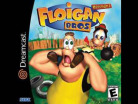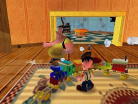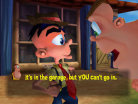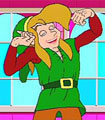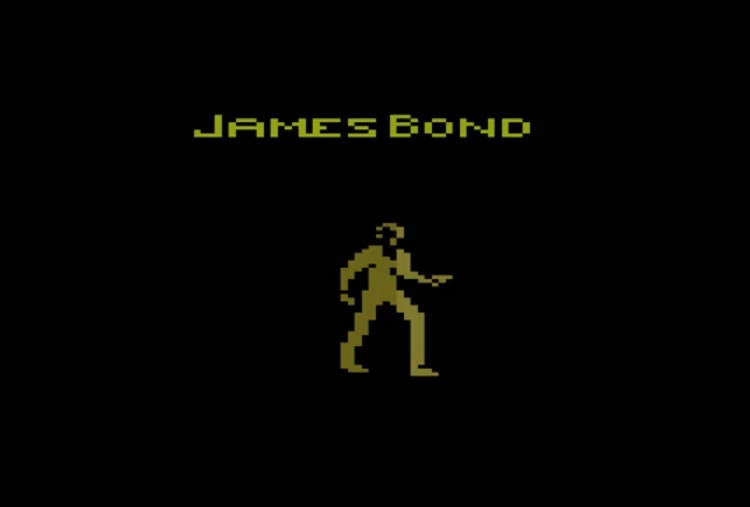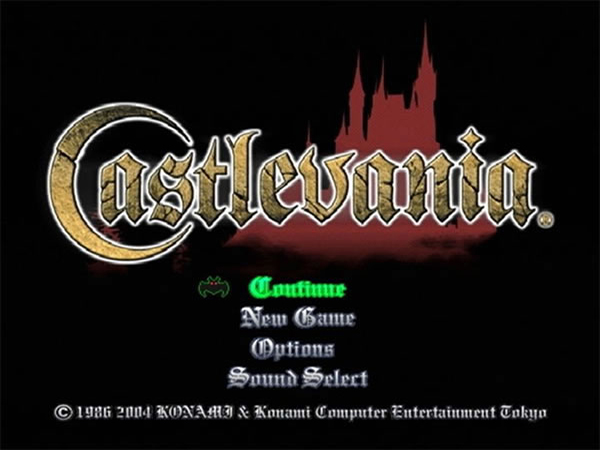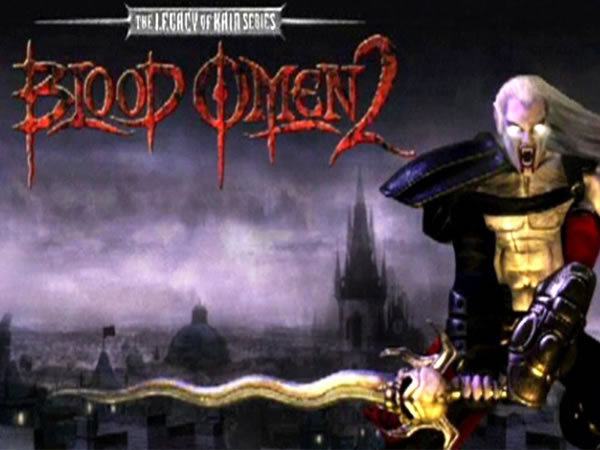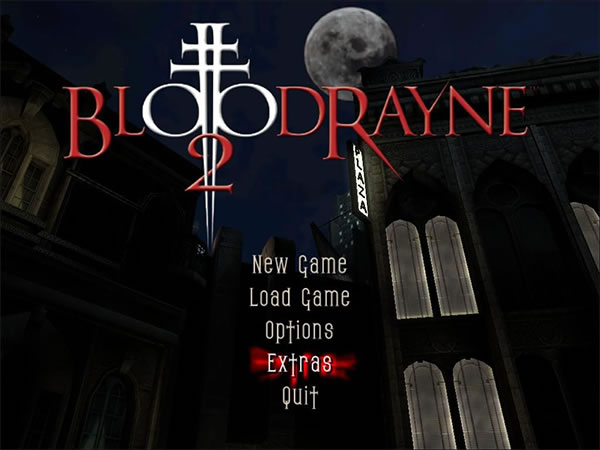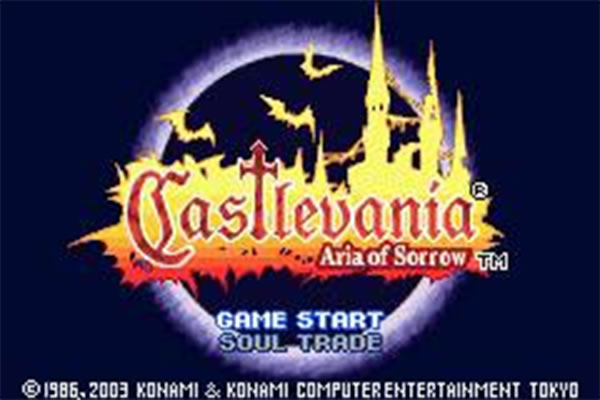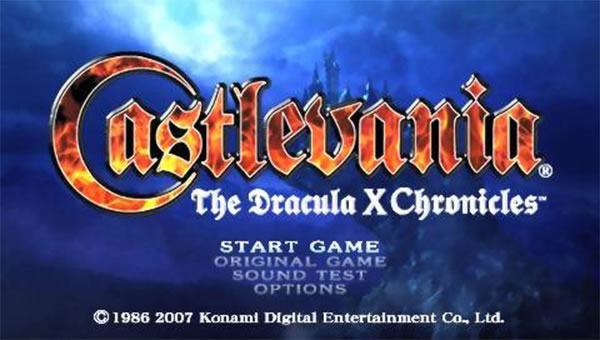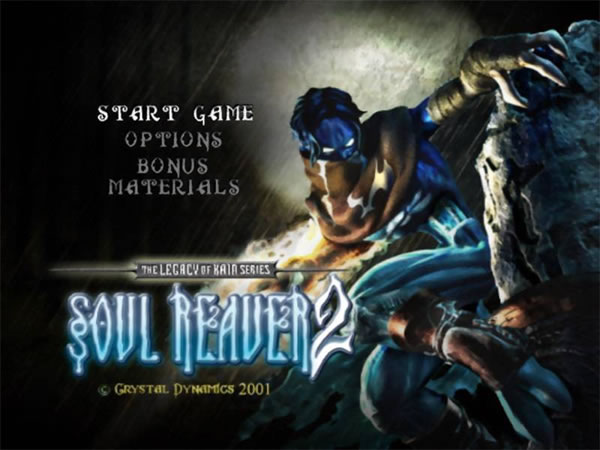- CLASSIC MAGAZINES
- REVIEW CREW
A show recapping what critics thought back
when classic games first came out! - NEXT GENERATION'S BEST & WORST
From the worst 1-star reviews to the best
5-stars can offer, this is Next Generation! - NINTENDO POWER (ARCHIVE)
Experience a variety of shows looking at the
often baffling history of Nintendo Power! - MAGAZINE RETROSPECTIVE
We're looking at the absolutely true history of
some of the most iconic game magazines ever! - SUPER PLAY'S TOP 600
The longest and most ambitious Super NES
countdown on the internet! - THEY SAID WHAT?
Debunking predictions and gossip found
in classic video game magazines! - NEXT GENERATION UNCOVERED
Cyril is back in this spin-off series, featuring the
cover critic review the art of Next Generation! - HARDCORE GAMER MAGAZING (PDF ISSUES)
Download all 36 issues of Hardcore Gamer
Magazine and relive the fun in PDF form!
- REVIEW CREW
- ELECTRONIC GAMING MONTHLY
- ELECTRONIC GAMING MONTHLY RANKS
From Mario to Sonic to Street Fighter, EGM
ranks classic game franchises and consoles! - ELECTRONIC GAMING MONTHLY BEST & WORST
Counting down EGM’s best and worst reviews
going year by year, from 1989 – 2009! - ELECTRONIC GAMING BEST & WORST AWARDS
11-part video series chronicling the ups and
downs of EGM’s Best & Worst Awards!
- ELECTRONIC GAMING MONTHLY RANKS
- GAME HISTORY
- GAME OVER: STORY BREAKDOWNS
Long-running series breaking down game
stories and analyzing their endings! - A BRIEF HISTORY OF GAMING w/ [NAME HERE]
Real history presented in a fun and pithy
format from a variety of game historians! - THE BLACK SHEEP
A series looking back at the black sheep
entries in popular game franchises! - INSTANT EXPERT
Everything you could possibly want to know
about a wide variety of gaming topics! - FREEZE FRAME
When something familiar happens in the games
industry, we're there to take a picture! - I'VE GOT YOUR NUMBER
Learn real video game history through a series
of number-themed episodes, starting at zero! - GREAT MOMENTS IN BAD ACTING
A joyous celebration of some of gaming's
absolute worst voice acting!
- GAME OVER: STORY BREAKDOWNS
- POPULAR SHOWS
- DG NEWS w/ LORNE RISELEY
Newsman Lorne Riseley hosts a regular
series looking at the hottest gaming news! - REVIEW REWIND
Cyril replays a game he reviewed 10+ years
ago to see if he got it right or wrong! - ON-RUNNING FEUDS
Defunct Games' longest-running show, with
editorials, observations and other fun oddities! - DEFUNCT GAMES QUIZ (ARCHIVE)
From online quizzes to game shows, we're
putting your video game knowledge to the test!- QUIZ: ONLINE PASS
Take a weekly quiz to see how well you know
the news and current gaming events! - QUIZ: KNOW THE GAME
One-on-one quiz show where contestants
find out if they actually know classic games! - QUIZ: THE LEADERBOARD
Can you guess the game based on the classic
review? Find out with The Leaderboard!
- QUIZ: ONLINE PASS
- DEFUNCT GAMES VS.
Cyril and the Defunct Games staff isn't afraid
to choose their favorite games and more! - CYRIL READS WORLDS OF POWER
Defunct Games recreates classic game
novelizations through the audio book format!
- DG NEWS w/ LORNE RISELEY
- COMEDY
- GAME EXPECTANCY
How long will your favorite hero live? We crunch
the numbers in this series about dying! - VIDEO GAME ADVICE
Famous game characters answer real personal
advice questions with a humorous slant! - FAKE GAMES: GUERILLA SCRAPBOOK
A long-running series about fake games and
the people who love them (covers included)! - WORST GAME EVER
A contest that attempts to create the worst
video game ever made, complete with covers! - LEVEL 1 STORIES
Literature based on the first stages of some
of your favorite classic video games! - THE COVER CRITIC
One of Defunct Games' earliest shows, Cover
Critic digs up some of the worst box art ever! - COMMERCIAL BREAK
Take a trip through some of the best and
worst video game advertisements of all time! - COMIC BOOK MODS
You've never seen comics like this before.
A curious mix of rewritten video game comics!
- GAME EXPECTANCY
- SERIES ARCHIVE
- NINTENDO SWITCH ONLINE ARCHIVE
A regularly-updated list of every Nintendo
Switch Online release, plus links to review! - PLAYSTATION PLUS CLASSIC ARCHIVE
A comprehensive list of every PlayStation
Plus classic release, including links! - RETRO-BIT PUBLISHING ARCHIVE
A regularly-updated list of every Retro-Bit
game released! - REVIEW MARATHONS w/ ADAM WALLACE
Join critic Adam Wallace as he takes us on a
classic review marathon with different themes!- DEFUNCT GAMES GOLF CLUB
Adam Wallace takes to the links to slice his way
through 72 classic golf game reviews! - 007 IN PIXELS
Adam Wallace takes on the world's greatest spy
as he reviews 15 weeks of James Bond games! - A SALUTE TO VAMPIRES
Adam Wallace is sinking his teeth into a series
covering Castlevania, BloodRayne and more! - CAPCOM'S CURSE
Adam Wallace is celebrating 13 days of Halloween
with a line-up of Capcom's scariest games! - THE FALL OF SUPERMAN
Adam Wallace is a man of steel for playing
some of the absolute worst Superman games! - THE 31 GAMES OF HALLOWEEN
Adam Wallace spends every day of October afraid
as he reviews some of the scariest games ever! - 12 WEEKS OF STAR TREK
Adam Wallace boldly goes where no critic has
gone before in this Star Trek marathon!
- DEFUNCT GAMES GOLF CLUB
- DAYS OF CHRISTMAS (ARCHIVE)
Annual holiday series with themed-episodes
that date all the way back to 2001!- 2015: 30 Ridiculous Retro Rumors
- 2014: 29 Magazines of Christmas
- 2013: 29 Questionable Power-Ups of Christmas
- 2012: 34 Theme Songs of Christmas
- 2011: 32 Game Endings of Christmas
- 2010: 31 Bonus Levels of Christmas
- 2009: 30 Genres of Christmas
- 2008: 29 Controls of Christmas
- 2007: 34 Cliches of Christmas
- 2006: 33 Consoles of Christmas
- 2005: 32 Articles of Christmas
- 2004: 31 Websites of Christmas
- 2003: 29 Issues of Christmas
- 2002: 28 Years of Christmas
- 2001: 33 Days of Christmas
- NINTENDO SWITCH ONLINE ARCHIVE
- REVIEW ARCHIVE
- FULL ARCHIVE
Floigan Bros.: Episode One
When we first heard Sega's nattering for their all-new 128-bit console, The Floigan Brothers was one of the first games I saw that got me excited. I don't believe a single volume of the official Dreamcast magazine was released that didn't include, at the very least, a screenshot or brief passing mention of this revolutionary platformer. As the days and months, and eventually years passed, the cult-favorite (but ultimately doomed) Dreamcast, word of this title became scarce, then completely absent. It was long after the launch of the system that we were given the final product, and for many the interest had waned and, sadly, expired. The Floigan Brothers was, with much bravado, dubbed Episode One in the series, with the promise of online functionality and later installments. Even, sadder, perhaps, is the fact that these aspects never saw substantial fruition. Though not a bad game in any regard, there simply isn't anything here that hasn't been done before, or better in more highly acclaimed franchises.
Have you ever wondered what would happen if one were to take the classic "Of Mice and Men", hand the rights over to Tex Avery, and turn it into a videogame? That is, from what I've gathered, the premise behind the Floigan's foray into video entertainment. Featuring the duo of Hoigle and Moigle Floigan (how fun is THAT to say?), the Floigan Brothers story unfolds in a junkyard where Moigle is working tirelessly, and rather brainlessly, on a surprise project for his diminutive brother Hoigle. It is the duty of Hoigle to help Moigle locate several parts to finish the project, and, in turn, thwart the treacherous Baron Malodorous and his squad of mercenary cats from taking hold of their filthpile. This, aside from a brief tutorial, is the whole of the game. If one knows exactly what needs to be done, it can be completed in a scant hour-two hours.
Because this game was touted as being a continuing series, we will never know how good or bad the brother's further outings would have been, but judging on the single entry, it would have been "none too purdy". The first frustrating factor is the control scheme, which does NOT include a jump button. This alone cost the game several points, for there are times when you can actually fall into a small creek and have no way of getting back onto the land. The analog stick controls movement, while the four buttons are used to call Moigle to attention, speak to Moigle, throw/punch/grab/dive depending on the situation, and create an on-screen cursor to point things out to Moigle. Through talking to our resident Lennie, various power-ups of sorts become available throughout the junkyard. These are only used, on average, once and do little more than provide a quick sight gag and, if implemented correctly, open new parts of the junkyard.
The majority of the time is spent playing games with Moigle to earn "points" in his notepad and, thus, gain the ability to unlock more games to play to earn more points. Does it sound tedious yet? I certainly hope so! Again, these new abilities were to be of significance had the series been enjoyable enough to merit a second or third outing, but alas, we are forced to instead level up a lummox for no readily apparent reason.
Let's get back to that Tex Avery appeal I'm sure Sega thought they had captured. The characters speak with that forties-style jive we all grew up listening to in all of his cartoons. This, I feel, definitely works in the game's favor; it's the wacky antics those cartoons inspired that, I feel, hurt what could have been seen as an endearing game. Hoigle spends much of his time getting flattened and doing the accordion-walk, bursting into flames and employing that "What Happened!?" look the cartoon characters always got, and turning green and sea-sick when bitten by a disgusting giant spider. I guess little kids might get a kick out of it, and maybe I'm just a seventy-year-old stick-in-the-mud, but it just didn't do it for me; and I'm actually only sixty-eight. Besides, I doubt many little kids could grasp this control scheme.
The music also sounds as though it were pulled right from those cartoons, which is most definitely a plus. Just imagine every one of those old cartoons where a cat strolled down the alley with a trashcan plate rummaging through dumpsters looking for those highly-coveted fishbone and boot dinners, and you'll know exactly how the music goes. The sound effects are mainly comprised of boings and kerplunks, and whooshes, and the like. Every part of this should remind you of any number of toons we all, hopefully, enjoyed as whppersnappers, so I couldn't possibly give it a failing grade based on pure nostalgia alone.
With a premise that feels as though it were DESIGNED to be later replicated as a video game, The Floigan Brothers should have been so much more. While the child inside, underneath, sitting next to, or in the other room of (respectively) us should get at least a little kick out of it the first time through, the tedious core elements prevent it from being a classic. It still has a fun, sordid history, and is a great title to add to one's collection. It "coulda been a contender" but will, unfortunately, never give Mario and crew a run for their money.
Have you ever wondered what would happen if one were to take the classic "Of Mice and Men", hand the rights over to Tex Avery, and turn it into a videogame? That is, from what I've gathered, the premise behind the Floigan's foray into video entertainment. Featuring the duo of Hoigle and Moigle Floigan (how fun is THAT to say?), the Floigan Brothers story unfolds in a junkyard where Moigle is working tirelessly, and rather brainlessly, on a surprise project for his diminutive brother Hoigle. It is the duty of Hoigle to help Moigle locate several parts to finish the project, and, in turn, thwart the treacherous Baron Malodorous and his squad of mercenary cats from taking hold of their filthpile. This, aside from a brief tutorial, is the whole of the game. If one knows exactly what needs to be done, it can be completed in a scant hour-two hours.
Because this game was touted as being a continuing series, we will never know how good or bad the brother's further outings would have been, but judging on the single entry, it would have been "none too purdy". The first frustrating factor is the control scheme, which does NOT include a jump button. This alone cost the game several points, for there are times when you can actually fall into a small creek and have no way of getting back onto the land. The analog stick controls movement, while the four buttons are used to call Moigle to attention, speak to Moigle, throw/punch/grab/dive depending on the situation, and create an on-screen cursor to point things out to Moigle. Through talking to our resident Lennie, various power-ups of sorts become available throughout the junkyard. These are only used, on average, once and do little more than provide a quick sight gag and, if implemented correctly, open new parts of the junkyard.
The majority of the time is spent playing games with Moigle to earn "points" in his notepad and, thus, gain the ability to unlock more games to play to earn more points. Does it sound tedious yet? I certainly hope so! Again, these new abilities were to be of significance had the series been enjoyable enough to merit a second or third outing, but alas, we are forced to instead level up a lummox for no readily apparent reason.
Let's get back to that Tex Avery appeal I'm sure Sega thought they had captured. The characters speak with that forties-style jive we all grew up listening to in all of his cartoons. This, I feel, definitely works in the game's favor; it's the wacky antics those cartoons inspired that, I feel, hurt what could have been seen as an endearing game. Hoigle spends much of his time getting flattened and doing the accordion-walk, bursting into flames and employing that "What Happened!?" look the cartoon characters always got, and turning green and sea-sick when bitten by a disgusting giant spider. I guess little kids might get a kick out of it, and maybe I'm just a seventy-year-old stick-in-the-mud, but it just didn't do it for me; and I'm actually only sixty-eight. Besides, I doubt many little kids could grasp this control scheme.
The music also sounds as though it were pulled right from those cartoons, which is most definitely a plus. Just imagine every one of those old cartoons where a cat strolled down the alley with a trashcan plate rummaging through dumpsters looking for those highly-coveted fishbone and boot dinners, and you'll know exactly how the music goes. The sound effects are mainly comprised of boings and kerplunks, and whooshes, and the like. Every part of this should remind you of any number of toons we all, hopefully, enjoyed as whppersnappers, so I couldn't possibly give it a failing grade based on pure nostalgia alone.
With a premise that feels as though it were DESIGNED to be later replicated as a video game, The Floigan Brothers should have been so much more. While the child inside, underneath, sitting next to, or in the other room of (respectively) us should get at least a little kick out of it the first time through, the tedious core elements prevent it from being a classic. It still has a fun, sordid history, and is a great title to add to one's collection. It "coulda been a contender" but will, unfortunately, never give Mario and crew a run for their money.
HOME |
CONTACT |
NOW HIRING |
WHAT IS DEFUNCT GAMES? |
NINTENDO SWITCH ONLINE |
RETRO-BIT PUBLISHING
Retro-Bit |
Switch Planet |
The Halcyon Show |
Same Name, Different Game |
Dragnix |
Press the Buttons
Game Zone Online | Hardcore Gamer | The Dreamcast Junkyard | Video Game Blogger
Dr Strife | Games For Lunch | Mondo Cool Cast | Boxed Pixels | Sega CD Universe | Gaming Trend
Game Zone Online | Hardcore Gamer | The Dreamcast Junkyard | Video Game Blogger
Dr Strife | Games For Lunch | Mondo Cool Cast | Boxed Pixels | Sega CD Universe | Gaming Trend
Copyright © 2001-2025 Defunct Games
All rights reserved. All trademarks are properties of their respective owners.
All rights reserved. All trademarks are properties of their respective owners.







